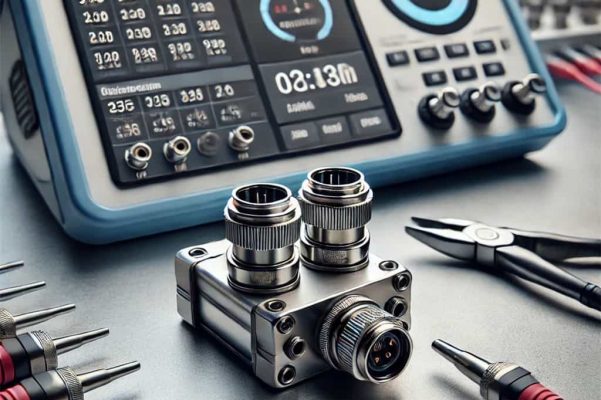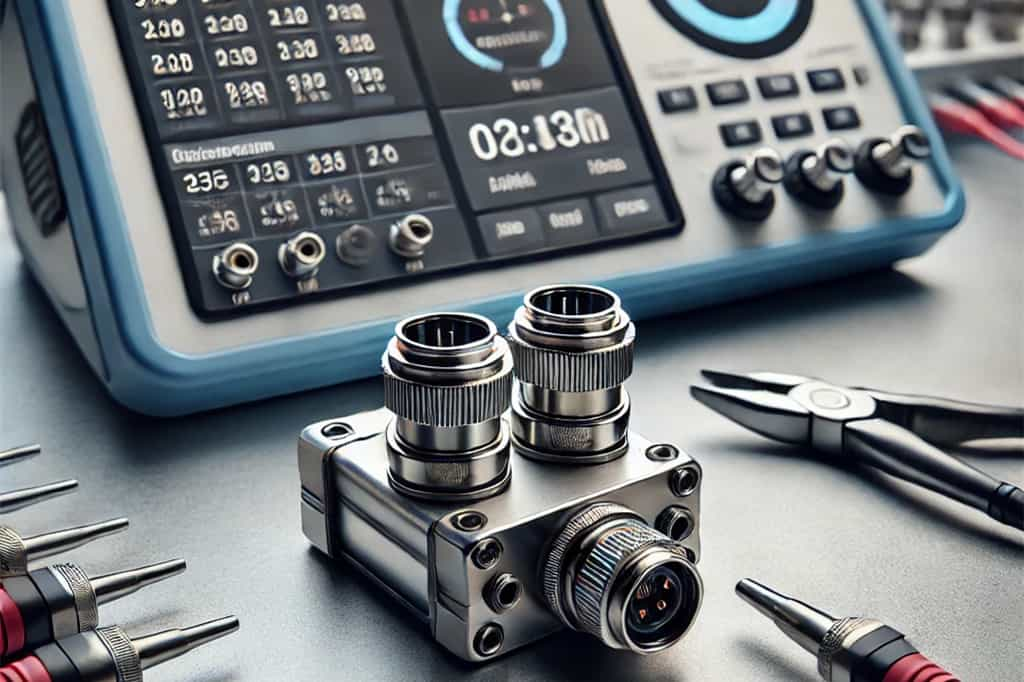XSR connectors (Extra Small, Robust Connectors) are widely used in fields such as aerospace, defense, telecommunications, and data centers due to their compact design, durability, and high-performance data transmission capabilities. These connectors support high-speed data transfer and maintain stability and reliability in harsh environments, making regular maintenance of XSR connectors crucial.
However, how can we effectively maintain these connectors? How often should maintenance be performed to ensure optimal performance? This is a question every engineer and technician using XSR connectors must address. In this article, Konnra will discuss the optimal maintenance frequency for XSR connectors, analyze maintenance needs in various environments and application scenarios, and provide practical tips to help ensure long-term stability and efficient operation of the system.

I. Characteristics and Application Scenarios of XSR Connectors
1.1 Basic Features of XSR Connectors
Key characteristics of XSR connectors include:
Compact Design: Their small size makes them ideal for use in equipment with limited space, while still supporting high-density connections.
High Data Transfer Rates: XSR connectors support high-speed data transmission at rates up to tens of gigabits per second, suitable for high-speed communication and high-performance computing applications.
Durability: These connectors can function reliably in extreme temperatures, vibrations, and other harsh environments, making them widely used in demanding sectors like aerospace and defense.
Electromagnetic Interference Shielding: XSR connectors are designed with excellent electromagnetic shielding properties, ensuring stable and uninterrupted signal transmission.
1.2 Typical Application Fields of XSR Connectors
Aerospace and Defense: In these fields, XSR connectors are used in avionics, radar, missile systems, and satellite communication devices, where they must function reliably under extreme conditions such as high altitudes, low temperatures, and significant vibration.
Data Centers and Telecommunications: XSR connectors are used for high-speed data transmission in equipment such as routers, servers, and switches within data centers and telecommunications systems.
High-Performance Computing: These connectors are essential in supercomputers and AI computing systems, where they support high bandwidth and low-latency data transfers.
Given the high performance and wide applications of XSR connectors, regular maintenance is essential to ensure their reliability and longevity. Furthermore, connector promotion activities can offer insights into the latest technological advances and maintenance recommendations.
II. Factors Influencing the Maintenance Frequency of XSR Connectors
Before discussing specific maintenance intervals, it is important to understand the key factors that affect maintenance frequency:
2.1 Operating Environment
Harsh Environments: If XSR connectors are used in harsh environments such as high temperatures, humidity, dust, or intense vibrations, their durability will be more severely tested. Environmental factors can affect the contact performance of the connectors, leading to unstable signal transmission. In such environments, more frequent inspections and maintenance, possibly every 3 to 6 months, are recommended.
Controlled Environments: In controlled environments such as data centers or laboratories, where conditions are stable, connectors are less exposed to environmental risks. Therefore, maintenance frequency can be reduced, with inspections taking place every 6 to 12 months.
2.2 Usage Frequency
High-Frequency Use: In applications where XSR connectors are frequently connected and disconnected, or where they support continuous high-volume data transfers, such as in telecommunications equipment or high-performance computers, wear and tear will accumulate more quickly. For these high-frequency use cases, it is recommended to check the connectors every 3 to 6 months, paying special attention to contact surfaces and latches to ensure they are not overly worn and still performing optimally.
Low-Frequency Use: If XSR connectors are in a low-frequency or permanently fixed connection setting, such as in certain fixed equipment applications, the maintenance interval can be extended to 12 months or longer. However, even in low-frequency use, periodic checks are still necessary to ensure the stability of the connection and the electrical performance.
2.3 Electrical Performance Requirements
Devices that rely on high-performance data transfers often demand excellent electrical performance from their connectors. Even minor signal loss or interference can affect system operation. For these application scenarios, regular electrical performance testing is crucial. If the connector is used in a high-speed, high-precision data transmission environment, an electrical test every 6 months is recommended, measuring contact resistance and signal integrity to ensure they remain within acceptable limits.
III. Recommended Maintenance Intervals for XSR Connectors
Based on the factors discussed, we can derive maintenance interval recommendations for different scenarios:
3.1 Aerospace and Defense Applications
In aerospace and defense, XSR connectors are often exposed to extreme conditions such as altitude, temperature, and vibration. The reliability of the connectors is critical, as failure could have serious consequences. Therefore, it is recommended:
Maintenance Interval: Every 3 to 6 months for a comprehensive inspection.
Inspection Focus: Visual inspection, contact surface cleaning, and checking fasteners and latches to ensure no physical damage or looseness. Electrical performance testing should also be conducted regularly.
3.2 Data Centers and Telecommunications
Data centers typically have stable environments where temperature and humidity are tightly controlled, allowing for longer maintenance intervals. Since data centers often operate continuously, maintaining the performance of XSR connectors is crucial. Therefore, it is recommended:
Maintenance Interval: Every 6 to 12 months.
Inspection Focus: Checking for dirt or oxidation on contact surfaces, cleaning external parts, and conducting necessary electrical performance tests.
3.3 Industrial Automation and High-Performance Computing
In industrial automation systems and high-performance computing environments, XSR connectors handle large volumes of data and often operate in challenging conditions. The physical wear and data transfer load in such environments are generally higher. Therefore, it is recommended:
Maintenance Interval: Every 6 months.
Inspection Focus: Regular cleaning of contact surfaces to maintain signal integrity and performing signal integrity tests and contact resistance tests when necessary.
IV. Maintenance Methods and Tips for XSR Connectors
4.1 Physical Inspection
Visual Inspection: During each maintenance cycle, start by visually inspecting the connector for any physical damage, corrosion, or contamination.
Fastener and Latch Check: Ensure that the connector’s fasteners are tight and the latches are in good condition. If any loosening or damage is found, it should be promptly tightened or replaced.
4.2 Cleaning and Lubrication
Cleaning Contact Surfaces: Use lint-free cloths and appropriate cleaning agents to gently wipe the contact points, avoiding dust or grease buildup. Keeping the contact surface clean is crucial, particularly in high-precision applications.
Lubrication: Some XSR connectors may require lubrication. Use only the specific lubricants recommended by the manufacturer and avoid improper chemicals that could degrade the connector’s materials.
4.3 Electrical Performance Testing
Regular electrical testing is essential to ensuring connector performance, including:
Signal Integrity Testing: Use specialized equipment to verify the integrity of signal transmission, ensuring there is no significant signal loss or electromagnetic interference.
Contact Resistance Testing: Measure the contact resistance of the connector to ensure it remains within acceptable limits. High contact resistance may lead to data transmission failure.
V. Conclusion
As a key component for high-speed data transmission and performance in harsh environments, the maintenance of XSR connectors is critical to the stability and performance of systems. Factors such as the operating environment, usage frequency, and electrical performance requirements all influence the recommended maintenance frequency. By setting appropriate maintenance intervals for different scenarios, combined with regular physical inspections, cleaning, and electrical performance tests, the lifespan of XSR connectors can be effectively extended, ensuring continuous high-performance operation.
For harsh environments or high-frequency usage, maintenance is generally recommended every 3 to 6 months, while for more controlled environments, intervals of 6 to 12 months may suffice. Regular maintenance not only prevents potential failures but also ensures the system’s long-term stable operation.










